Why Sequencing DNA In Space Is A Big Deal
Why Sequencing DNA in Space is a Big Deal
… And How You Can Talk to the Scientists Who Made It Happen

Less than one month ago, DNA had never been sequenced in space. As of today, more than one billion base pairs of DNA have been sequenced aboard the International Space Station, Earth’s only orbiting laboratory. The ability to sequence the DNA of living organisms in space opens a whole new world of scientific and medical possibilities. Scientists consider it a game changer.

NASA astronaut Kate Rubins, who has a background in genomics, conducted the sequencing on the space station as part of the Biomolecule Sequencer investigation. A small, commercial, off-the-shelf device called MinION (min-EYE-ON), manufactured by Oxford Nanopore Technologies in the UK, was used to sequence the DNA of bacteria, a virus and rodents. Human DNA was not sequenced, and there are no immediate plans to sequence human DNA in space.

(Image Credit: Oxford Nanopore Technologies)
The MinION is about the size of a candy bar, and plugs into a laptop or tablet via USB connection, which also provides power to the device. The tiny, plug and play sequencer is diminutive compared to the large microwave-sized sequencers used on Earth, and uses much less power. Unlike other terrestrial instruments whose sequencing run times can take days, this device’s data is available in near real time; analysis can begin within 10-15 minutes from the application of the sample.

Having real-time analysis capabilities aboard the space station could allow crews to identify microbes, diagnose infectious disease and collect genomic and genetic data concerning crew health, without having to wait long periods of time to return samples to Earth and await ground-based analysis.
The first DNA sequencing was conducted on Aug. 26, and on Sept. 14, Rubins and the team of scientists back at NASA’s Johnson Space Center in Houston hit the one-billionth-base-pairs-of-DNA-sequenced mark.

Have more questions about how the Biomolecule Sequencer works, or how it could benefit Earth or further space exploration? Ask the team of scientists behind the investigation, who will be available for questions during a Reddit Ask Me Anything on /r/science on Wednesday, Sept. 29 at 2 p.m. EDT.
The participants are:
Dr. Aaron Burton, NASA Johnson Space Center, Planetary Scientist and Principal Investigator
Dr. Sarah Castro-Wallace, NASA Johnson Space Center, Microbiologist and Project Manager
Dr. David J. Smith, NASA Ames Research Center, Microbiologist
Dr. Mark Lupisella, NASA Goddard Space Flight Center, Systems Engineer
Dr. Jason P. Dworkin, NASA Goddard Space Flight Center, Astrobiologist
Dr. Christopher E. Mason, Weill Cornell Medicine Dept. of Physiology and Biophysics, Associate Professor
More Posts from Maevetheeuropan and Others
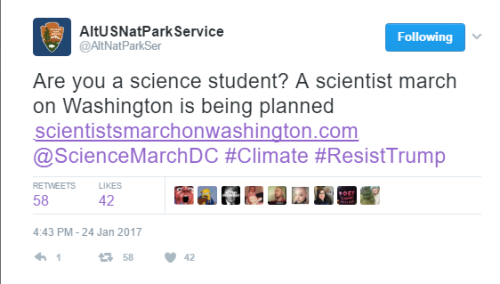
GUYS https://twitter.com/AltNatParkSer/status/824054953404669953 http://www.scientistsmarchonwashington.com/ THE NATIONAL PARK SERVICE IS IN OPEN REBELLION
Solar System: Things to Know This Week
Almost every day, we receive a message from a spacecraft more than 10.6 billion miles (about 17 billion km) away.
At that unimaginable distance, it takes the radio signal almost 16 hours to arrive. The spacecraft is Voyager 2, which launched 40 years ago this month. It’s still operating, sending back dispatches from the dark reaches well beyond the orbit of Pluto. Even now, scientists are still actively exploring the outer boundaries of the solar system using Voyager 2, decades after its “Grand Tour” of the giant planets Jupiter, Saturn, Uranus and Neptune revealed their splendors like never before. This week, we recall 10 highlights from one of the most epic voyages in human history.
1. A Journey of 10 Billion Miles Begins With the First Step

Voyager 2 set out from Earth on Aug. 20, 1977. Even though it launched before its twin spacecraft, Voyager 1, it carried the ‘2’ moniker because mission planners knew its trajectory would bring it to Jupiter after Voyager 1’s arrival there.
2. The Grand Tour
Voyager 2’s trajectory was special because it took advantage of a rare orbital alignment to fly by all four gas giant planets: Jupiter, Saturn, Uranus and Neptune. It was the first, and so far the only, spacecraft to carry out a close-up reconnaissance of Uranus and Neptune.
3. Not-So-Gentle Giant
Voyager 2 flew by Jupiter in April 1979, capturing striking images of the planet’s volcanic moon Io and its violent storms larger than the entire Earth.
4. Saturn’s Not the Only One

Jupiter has its own ring system, and Voyager 2 provided the first pictures.
5. An Ocean Under Ice
During its Jupiter encounter, Voyager 2 obtained close-up looks at Jupiter’s moon Europa, including linear cracks and other features which first led scientists to realize Europa probably hides a vast sea of liquid water beneath an icy shell, the first known world outside Earth that could have an ocean.
6. Ringworld, the Prequel
Voyager 2 zoomed through the Saturn system in August 1981. It saw hints of mysterious features that the Cassini mission would later reveal in stunning detail, including Enceladus, with its bright surface that suggested geologic activity, and Saturn’s intriguing hexagonal jet stream.
7. Swiftly by a Tilted Planet
In January 1984, Voyager offered humanity its first detailed look at the seventh planet, Uranus, the only one tilted on its side relative to the Sun. Voyager images revealed 11 new moons, including Juliet, Puck, Cressida, Rosalind and Ophelia. The moon Miranda presented a bizarre landscape that left scientists debating its origins for years. Voyager also captured views of the planet’s lacy rings, and found that it is the coldest in the solar system, at minus 353 degrees Fahrenheit (59 Kelvin).
8. In Neptune’s Blue Realm

After picking up a gravitational speed boost at each previous planetary encounter, by the time Voyager reached Neptune it shot through the entire system of Neptunian rings and moons in a matter of hours. Voyager saw a titanic storm in Neptune’s windy atmosphere, discovered new moons, and revealed active geysers erupting on Triton’s frigid surface.
9. Postcards From the Edge
Although their cameras are no longer functioning, other key scientific instruments on board both Voyager spacecraft are still collecting data. Voyager 1 is exploring the boundary between the Sun’s realm and interstellar space. Voyager 2 hasn’t traveled quite as far. In September 2007, it crossed the termination shock (where the speed of the solar wind of charged particles drops below the speed of sound) at a point about 84 Astronomical Units from the Sun (more than twice the distance to Pluto). See https://go.nasa.gov/2uwrndb
10. Ride Along
Voyager’s mission is far from over. Engineers estimate the spacecraft will have enough power to operate into the mid-2020s. You can ride along at www.jpl.nasa.gov/voyager, or by following @NASAVoyager on Twitter and by downloading our free 3-D space simulation software, Eyes on the Solar System at eyes.nasa.gov.

One more thing: Inspired by the messages of goodwill carried on Voyager’s Golden Record, you’re invited to send a short, uplifting message to Voyager and all that lies beyond it via social media. With input from the Voyager team and a public vote, one of these messages will be selected for us to beam into interstellar space on Sept. 5, 2017—the 40th anniversary of Voyager 1’s launch. Post your message on social media with the tag #MessageToVoyager by Aug 15. Details: www.jpl.nasa.gov/voyager/message/
Make sure to follow us on Tumblr for your regular dose of space: http://nasa.tumblr.com
Spacewalk Friday: Installing a New "Parking Spot" on Station
This Friday, Aug. 19, two U.S. astronauts will install a new gateway for American commercial crew spacecraft at the International Space Station.

Commercial crew flights from Florida’s Space Coast to the International Space Station will restore America’s human spaceflight launch capability and increase the time U.S. crews can dedicate to scientific research.

The adapter being installed (imaged below) was launched on a SpaceX Dragon cargo spacecraft and arrived on orbit July 20. NASA astronauts Jeff Williams and Kate Rubins will perform the spacewalk to install the equipment this Friday, Aug. 19. This will be the fourth spacewalk in Williams’ career and the first for Rubins.

Four previous spacewalks…like the one below…helped set the stage for installation of this docking adapter. During those previous spacewalks, other crew members laid hundreds of feet of power and data cables outside the space station.

On Wednesday, the robotics team using the Canadarm2 and its attached “Dextre” manipulator, will reach into the SpaceX Dragon trunk and pull out the docking adapter and position it for Friday’s spacewalk activities.

The morning of the spacewalk, while the astronauts are getting suited up, the robotic arm will position the docking adaptor near the port so that it will be ready for installation.

The two astronauts will venture outside the space station to install the first International Docking Adapter (IDA). This new adapter port will provide a parking space for U.S. Commercial Crew vehicles.
Watch LIVE!
Coverage of the spacewalk begins at 6:30 a.m. EDT on Friday, Aug. 19; with the spacewalk scheduled to begin at 8:05 a.m. EDT. Stream live online HERE.
Make sure to follow us on Tumblr for your regular dose of space: http://nasa.tumblr.com
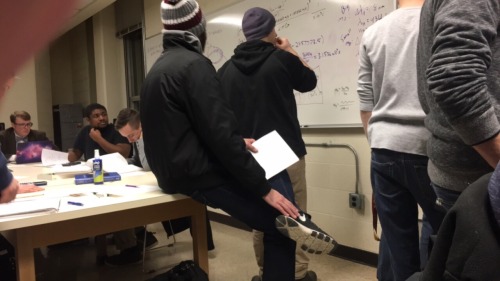
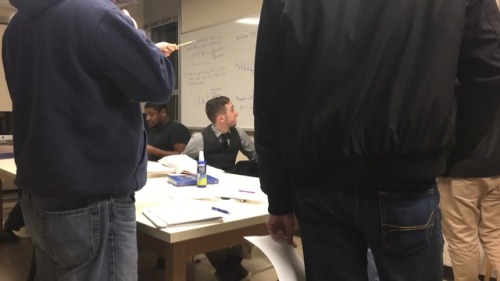
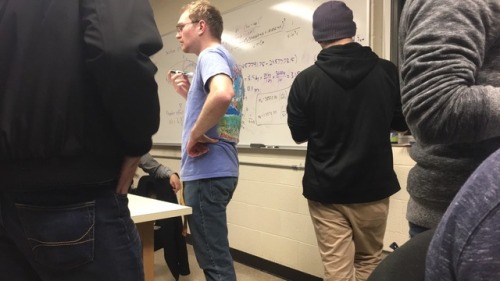
The beautiful chaos of watching 12 frantic astrophysics students try to save a theoretical astronaut from falling into a black hole. I’ve never seen a group of people work so quickly and efficiently before.
Solar System: Things to Know This Week
We love Lucy—our spacecraft that will visit the ancient Trojan asteroids near Jupiter, that is. This week, let us count the ways this 2021 mission could revolutionize what we know about the origins of Earth and ourselves.
1. Lucky Lucy

Earlier this year, we selected the Lucy mission to make the first-ever visit to a group of asteroids known as the Trojans. This swarm of asteroids orbits in two loose groups around the Sun, with one group always ahead of Jupiter in its path, and the other always behind. The bodies are stabilized by the Sun and Jupiter in a gravitational balancing act, gathering in locations known as Lagrange points.
2. Old. Really, Really Old

Jupiter’s swarms of Trojan asteroids may be remnants of the material that formed our outer planets more than 4 billion years ago—so these fossils may help reveal our most distant origins. “They hold vital clues to deciphering the history of the solar system,” said Dr. Harold F. Levison, Lucy principal investigator from Southwest Research Institute (SwRI) in Boulder, Colorado.
3. A Link to The Beatles

Lucy takes its name from the fossilized human ancestor, called “Lucy” by her discoverers, whose skeleton provided unique insight into humanity’s evolution. On the night it was discovered in 1974, the team’s celebration included dancing and singing to The Beatles’ song “Lucy In The Sky With Diamonds.” At some point during that evening, expedition member Pamela Alderman named the skeleton “Lucy,” and the name stuck. Jump ahead to 2013 and the mission’s principal investigator, Dr. Levison, was inspired by that link to our beginnings to name the spacecraft after Lucy the fossil. The connection to The Beatles’ song was just icing on the cake.
4. Travel Itinerary
One of two missions selected in a highly competitive process, Lucy will launch in October 2021. With boosts from Earth’s gravity, it will complete a 12-year journey to seven different asteroids: a Main Belt asteroid and six Trojans.
5. Making History

No other space mission in history has been launched to as many different destinations in independent orbits around the Sun. Lucy will show us, for the first time, the diversity of the primordial bodies that built the planets.
6. What Lies Beneath
Lucy’s complex path will take it to both clusters of Trojans and give us our first close-up view of all three major types of bodies in the swarms (so-called C-, P- and D-types). The dark-red P- and D-type Trojans resemble those found in the Kuiper Belt of icy bodies that extends beyond the orbit of Neptune. The C-types are found mostly in the outer parts of the Main Belt of asteroids, between the orbits of Mars and Jupiter. All of the Trojans are thought to be abundant in dark carbon compounds. Below an insulating blanket of dust, they are probably rich in water and other volatile substances.
7. Pretzel, Anyone?

This diagram illustrates Lucy’s orbital path. The spacecraft’s path (green) is shown in a slowly turning frame of reference that makes Jupiter appear stationary, giving the trajectory its pretzel-like shape.
8. Moving Targets

This time-lapsed animation shows the movements of the inner planets (Mercury, brown; Venus, white; Earth, blue; Mars, red), Jupiter (orange), and the two Trojan swarms (green) during the course of the Lucy mission.
9. Long To-Do List
Lucy and its impressive suite of remote-sensing instruments will study the geology, surface composition, and physical properties of the Trojans at close range. The payload includes three imaging and mapping instruments, including a color imaging and infrared mapping spectrometer and a thermal infrared spectrometer. Lucy also will perform radio science investigations using its telecommunications system to determine the masses and densities of the Trojan targets.
10. Dream Team
Several institutions will come together to successfully pull off this mission. The Southwest Research Institute in Boulder, Colorado, is the principal investigator institution. Our Goddard Space Flight Center will provide overall mission management, systems engineering, and safety and mission assurance. Lockheed Martin Space Systems in Denver will build the spacecraft. Instruments will be provided by Goddard, the Johns Hopkins Applied Physics Laboratory and Arizona State University. Discovery missions are overseen by the Planetary Missions Program Office at our Marshall Space Flight Center in Huntsville, Alabama, for our Planetary Science Division.
Make sure to follow us on Tumblr for your regular dose of space: http://nasa.tumblr.com

What’s hard about Mars?
Mars, unlike the Moon, is far away. It also has an atmosphere - but not a useful one. Atmospheric density, wind, dust storms… all of these things contribute to a larger list of circumstances that any given mission needs to be ready for.
All those circumstances contribute heavily to the cost, time and hard resources needed to be poured into the mission preparation. In addition, the vast distance to Mars means the cost of carrying all this prepared hardware must be covered.
The atmosphere of Mars is such that if you’re going too fast during entry, you’ll burn up. It’s such a low density however that parachutes aren’t tremendously useful.
During the Curiosity rover’s landing it needed a heat shield, a supersonic parachute, rocket boosters to slow it down, a sky-crane to allow Curiosity to drop to the surface like an interplanetary spider and then explosive propulsion to send the platform it dropped from a safe distance away to crash into the surface.
During this landing, the rover experienced a force of about 15 g’s. That force would make a 200 lb man weigh 3000 lbs. Without proper precautions it would make the average head snap down at about 150 to 165 lbs.
NASA’s developing a new type of parachute and it’s being attached to a flying saucer-like spacecraft known as the Low-Density Supersonic Decelerator. This is currently hoped to provide NASA with a stable go-to architecture for future Mars missions.
The red planet’s killed most missions sent there. Power for solar-panels on rovers get covered during planet-wide dust storms. Some missions smashed into its moons. Some have smashed into its surface. Others have simply missions the planet entirely only to drift away as Mars dances around the Sun.
The world is an untamed place and has sought to buck all attempts to temper its mysteries.
(Image credit: ESA / DLR / FU Berlin (G. Neukum) / animation by Emily Lakdawalla)
Hey! Just wondering, how did a solar eclipse prove the theory of relativity?
According to the theory of relativity space is not static. The movements of objects can change the structure of space.

In Einstein’s view, space is combined with another dimension - time - which creates universewide “fabric” called space-time. Object travel through this fabric, which can be warped, bent and twisted by the masses and motions of objects within space-time.
One prediction of general relativity was that light should not travel in a perfectly straight line. When traveling through space-time and approaching the gravitational field of a mass object, the light must bend-but not too much.
Then the English astronomer Sir Frank Watson Dyson proposed that the total solar eclipse of 1919 could prove, because the Sun would cross the bright Hyades star cluster. Star light would have to cross the gravitational field of the sun on the way to Earth, but would be visible due to the darkness of the eclipse. This would allow precise measurements of the positions displaced by the gravity of the stars in the sky.

Because of this, teams of researchers strategically positioned themselves in two locations that would initially provide the best conditions for observing the eclipse. One group stayed in Ilha do Príncipe, in São Tomé and Príncipe, and other researchers settled in Sobral, Ceará (Brazil).
Eddington, who led the experiment, first measured the “true” positions of the stars during January and February of 1919. In May, he went to remote Prince Island (in the Gulf of Guinea, on the west coast of Africa) to measure Positions of the stars during the eclipse, seen through the gravitational lens of the sun.

The total eclipse lasted about 6 minutes and 51 seconds, during those few minutes the astronomers captured several photos of the total eclipse. When Eddington returned to England, his data from Príncipe confirmed Einstein’s predictions.Eddington announced his discoveries on November 6, 1919.

Images: x ,x ,x ,x
Five human spaceflight missions to look forward to in the next decade
by Chris Arridge

From astronauts breaking records for the longest amount of time spent in space to experiments growing food and keeping bacteria in orbit, the past decade of human spaceflight has been fascinating. There has also been an explosion of privately-funded spaceflight companies providing access to space, including delivering supplies to the International Space Station (ISS).
The next decade will see a remarkable mix of countries and companies getting involved. Plans include taking humans from low-Earth orbit back to the moon and even an asteroid in the 2020s – all designed to help prepare for the ultimate goal of a human mission to Mars in the 2030s.
Keep reading
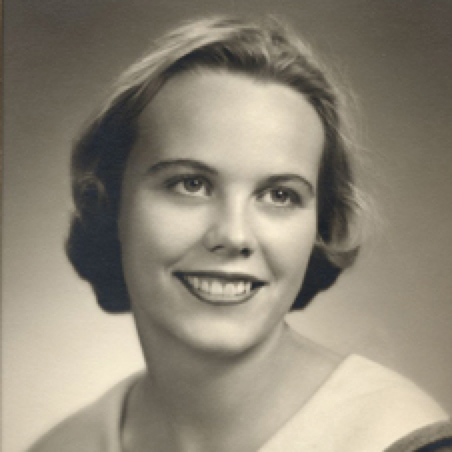

Meet the all-female team of coders that brought us Apollo 11.
In 1969, the world watched as Neil Armstrong marked his historic achievement with the words, “That’s one small step for man, one giant leap for mankind.” His now-famous transmission was heard around the globe thanks to NASA’s Deep Space Network, which made communication from outer space possible.
That network was built by a woman named Susan Finley. She was part of an all-female team of coders whose work was integral to the success of the Apollo 11 mission. Science writer Nathalia Holt brings us their stories in her book, Rise of the Rocket Girls: The Women Who Propelled Us from Missiles to the Moon to Mars.
Listen to their story here.
[Images via NASA]
-
 botanicalbonelord reblogged this · 5 years ago
botanicalbonelord reblogged this · 5 years ago -
 quagmire-sapphire liked this · 6 years ago
quagmire-sapphire liked this · 6 years ago -
 eclecticap liked this · 7 years ago
eclecticap liked this · 7 years ago -
 lorywisen-blog liked this · 7 years ago
lorywisen-blog liked this · 7 years ago -
 classica-1750 reblogged this · 7 years ago
classica-1750 reblogged this · 7 years ago -
 classica-1750 liked this · 7 years ago
classica-1750 liked this · 7 years ago -
 theasianexception reblogged this · 7 years ago
theasianexception reblogged this · 7 years ago -
 jfs1 reblogged this · 7 years ago
jfs1 reblogged this · 7 years ago -
 the-last-awakener reblogged this · 8 years ago
the-last-awakener reblogged this · 8 years ago -
 the-last-awakener liked this · 8 years ago
the-last-awakener liked this · 8 years ago -
 mimris liked this · 8 years ago
mimris liked this · 8 years ago -
 austinmatthewrossi46 liked this · 8 years ago
austinmatthewrossi46 liked this · 8 years ago -
 drefvalentine reblogged this · 8 years ago
drefvalentine reblogged this · 8 years ago -
 i-curiousaquarian liked this · 8 years ago
i-curiousaquarian liked this · 8 years ago -
 1queerengineer liked this · 8 years ago
1queerengineer liked this · 8 years ago -
 best-hotels-posts reblogged this · 8 years ago
best-hotels-posts reblogged this · 8 years ago -
 wads-of-gabe liked this · 8 years ago
wads-of-gabe liked this · 8 years ago -
 nothinginthemorning liked this · 8 years ago
nothinginthemorning liked this · 8 years ago -
 chris9076 reblogged this · 8 years ago
chris9076 reblogged this · 8 years ago -
 chris9076 liked this · 8 years ago
chris9076 liked this · 8 years ago -
 spacenerdhappy reblogged this · 8 years ago
spacenerdhappy reblogged this · 8 years ago -
 wearelyca reblogged this · 8 years ago
wearelyca reblogged this · 8 years ago -
 seaki reblogged this · 8 years ago
seaki reblogged this · 8 years ago -
 cryin4u-45 liked this · 8 years ago
cryin4u-45 liked this · 8 years ago -
 risenhooversa liked this · 8 years ago
risenhooversa liked this · 8 years ago -
 thesadandlonelyclub liked this · 8 years ago
thesadandlonelyclub liked this · 8 years ago -
 halamadrid-miasanmia reblogged this · 8 years ago
halamadrid-miasanmia reblogged this · 8 years ago -
 halamadrid-miasanmia liked this · 8 years ago
halamadrid-miasanmia liked this · 8 years ago -
 intergalacticspaceangel reblogged this · 8 years ago
intergalacticspaceangel reblogged this · 8 years ago -
 intergalacticspaceangel liked this · 8 years ago
intergalacticspaceangel liked this · 8 years ago -
 abovelucky liked this · 8 years ago
abovelucky liked this · 8 years ago -
 paintedpolarbear reblogged this · 8 years ago
paintedpolarbear reblogged this · 8 years ago -
 randomfandoms6279-blog reblogged this · 8 years ago
randomfandoms6279-blog reblogged this · 8 years ago -
 randomfandoms6279-blog liked this · 8 years ago
randomfandoms6279-blog liked this · 8 years ago
